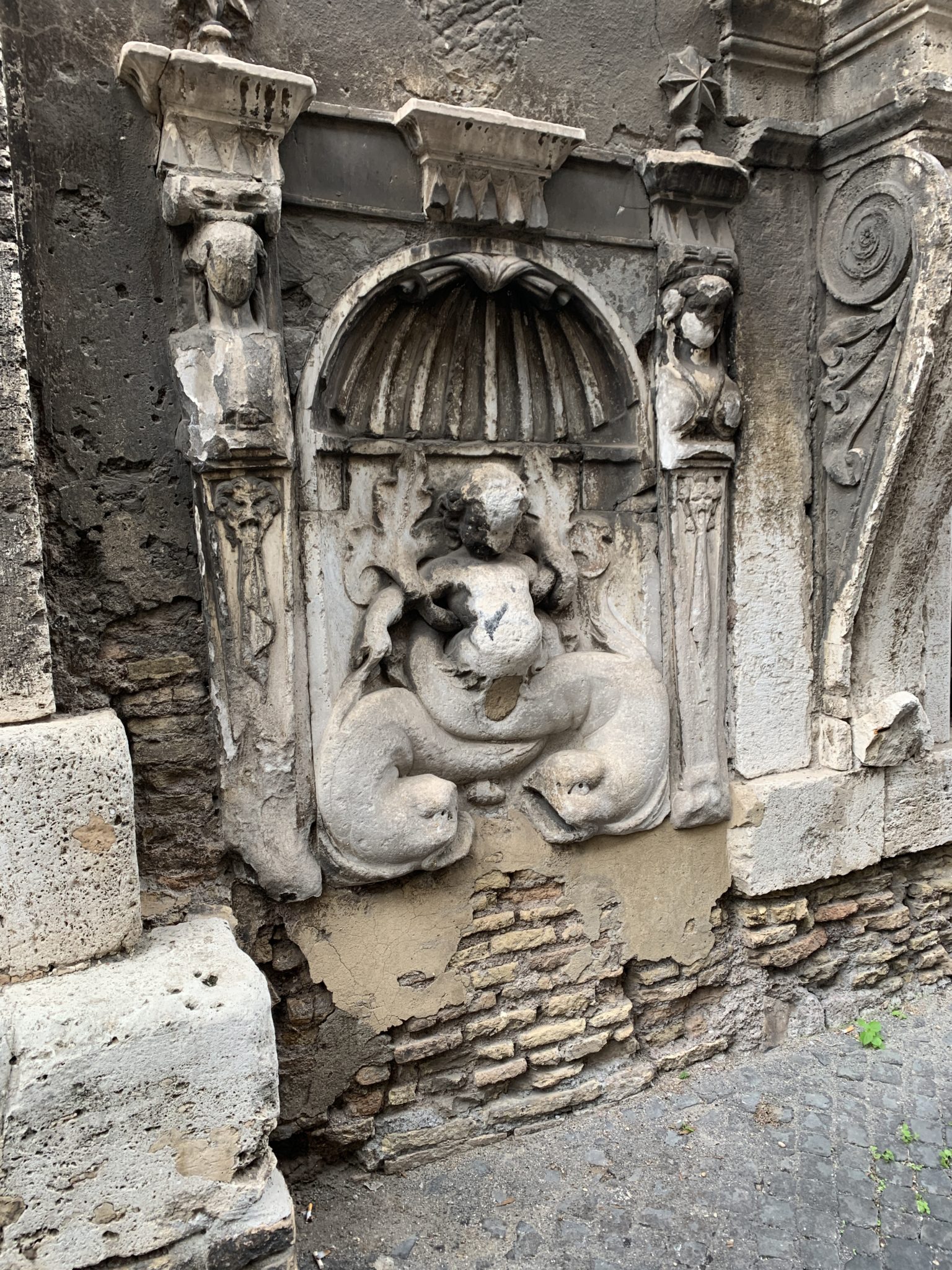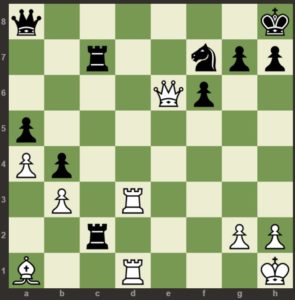
Meanwhile…
NB: I’ll hold comments with solutions ’till the next day so there won’t be “spoilers” for others.
Priestly chess players, drop me a line. HERE
Your use of my Amazon affiliate link is a major part of my income. It helps to pay for insurance, groceries, everything. Please remember me when shopping online. Thanks in advance.




































No luck finding a diminutive form of ‘Triton’ (*Tritunculus?) or name of the male offspring of a Triton, nor anything about Triton anatomy, beyond a little discussion of the antiquity of the two-tailed variety. Or the location and history of this little fountain! This is certainly a puer but sadly no longer mingens. I wonder how well recorded the appearance of the missing basin is? The lekaneclasm and the phalloclasm (or whatever the proper terms are) ought to be reversed together.
Venerator: This little fountain is in the Via Giulia on the corner of the façade of the Palazzo Sacchetti, at the intersection with the Via del Cefalo. And I don’t think that is a Triton, but rather there are two separate dolphins. There was certainly a basin. Migens… yes, probably. Which reminds me that in WV there is a place called Mingo Junction. Also, and this is hard to imagine, there was once a priest of St. Paul and Minneapolis named Fr. Mingo. He taught at the minor seminary. He taught LATIN of all things. Imagine the hilarity of the young men.
1. R-d8 + Q-d8 (forced, as N-d8 results in Q-e8 ++)
2. R-d8 + N-d8
3. Q-e8 ++
I would like to hazard a guess that the fountain is, in fact, Cupid in a chariot being pulled by dolphins. Several examples of this exist in ancient art and its more modern imitators, including a Florentine fountain. The literary reference has so far eluded me. Wikipedia provides only conjectures as to the significance of the Cupid/dolphin symbolism.
“On the subject of Triton, though, and clasms iconal and otherwise, I offer the sentiments of Wordsworth:
The world is too much with us; late and soon,
Getting and spending, we lay waste our powers;—
Little we see in Nature that is ours;
We have given our hearts away, a sordid boon!
This Sea that bares her bosom to the moon;
The winds that will be howling at all hours,
And are up-gathered now like sleeping flowers;
For this, for everything, we are out of tune;
It moves us not. Great God! I’d rather be
A Pagan suckled in a creed outworn;
So might I, standing on this pleasant lea,
Have glimpses that would make me less forlorn;
Have sight of Proteus rising from the sea;
Or hear old Triton blow his wreathèd horn.”
We must never trade our Catholic joys to purchase the respect of Modern woes.
1. Rd8+ Qxd8
2. Rxd8+ Nxd8
3. Qe8#
Father – and TheCavalierHatherly – thank you both!
Before you identified it for us, Father, it had slowly dawned on me that a two-tailed Triton’s tails would probably not end monstrously in heads – and then I thought maybe the leaf-like things crossing the little fellow’s arms might be the end of his two tails – but it does seem pretty clear they are the ends of the dolphins’ tails. And the connection of Cupid with dolphins does sound very likely. (The only two references I can find quickly with any details – in the Swedish and Italians Wikipedias – simply call him a ‘putto’, with the Swedish article entitled “Fontanella del Putto” and linking an interesting Italian source entitled “Fontana del Putto”: both its Italian sources think the leafy things are indeed the tails of the dolphins!)
I hope Fr. Mingo bore it well! My Latin wits are slow at such wordplay. When I was learning Latin I also encountered the album ‘Music of Shakespears’s Time’ which noted Silence responding to a remark by Falstaff in Henry IV, Part II by singing the lines, “Do me right, / And dub me knight— / Samingo” – and provided the song “Monsieur Mingo”. But until your reply, it had never dawned on me that this song about a prodigious drinker was making that Latin wordplay. An article on the Folger Library website, “Mingo (or Myngs)”, reaches the same conclusion – and tells us that the music I heard on that old LP was Orlando Lasso’s “Un jour vis un foulon” – and what does a fuller work with to whiten? – surely another layer of joking! “Mirabilia opera tua, et anima mea cognoscit nimis” (Psalm 138:14) – and some ‘earthy’ humor about one detail of that also witnesses against willful modern woes.